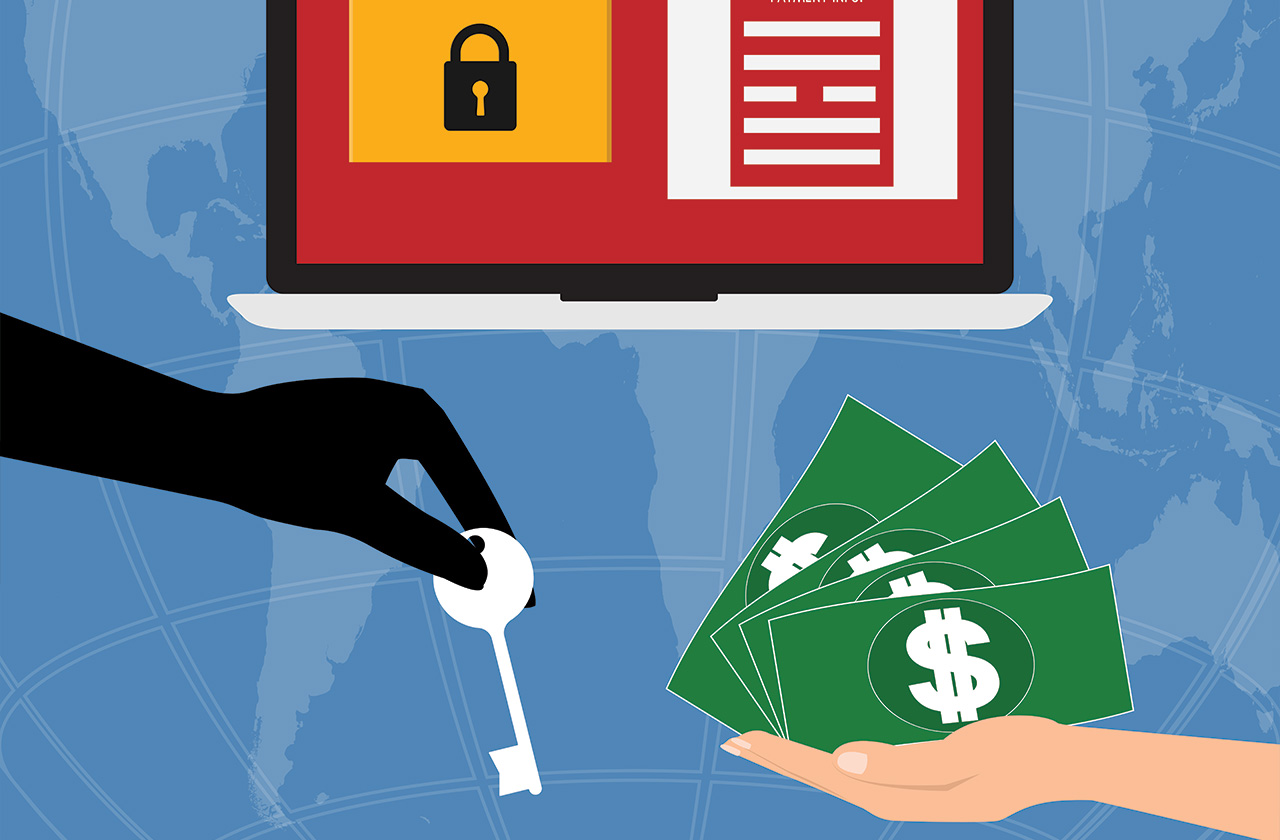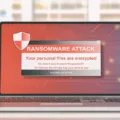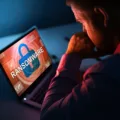Locky ransomware is a type of malicious software that encrypts important files on your computer and then demands payment for the decryption key. It is one of the most widespread ransomware variants, first appearing in 2016 and being distributed through large-scale phishing campaigns using email attachments that appear to be legitimate.
Locky works by encrypting all kinds of different file types, including documents, photos, videos, and other types of files. It then displays a ransom message demanding payment in order to regain access to the encrypted files. The ransom amount is typically between 0.5 and 2 Bitcoin (or an equivalent USD amount).
The original Locky ransomware was no longer active since 2017 when the Necurs botnet was taken offline, however, variants are still out there and there is always the possibility that Locky could return. In order to protect your system from this malware, it’s important to take basic security steps such as keeping your antivirus software up-to-date, avoiding suspicious links or emails from unknown senders, backing up data regularly, and not clicking on any attachments from email addresses you don’t recognize.
It’s also important to note that if you do become a victim of Locky ransomware, paying the ransom will not guarantee you will get your files back as threat actors remain largely untraceable due to the use of Bitcoin payments. Organizations should ensure they have security measures in place in order to reduce their risk of falling victim to ransomware infections such as disabling macros in Office documents and email filters that can detect malicious content.

Is Locky Ransomware Still a Threat?
Locky ransomware is no longer active in its original form; however, variants of the malware are still out there. As such, it’s important to take precautions to protect your system from becoming infected with this type of malware.
The best way to prevent Locky ransomware or any other type of ransomware is to practice safe computing habits. This includes ensuring your computer and software are up-to-date with the latest security patches, using a reliable antivirus program, and avoiding suspicious emails or links. It’s also important to back up your data regularly in case you become infected and need to restore your files from a backup copy.
The Effects of Locky Ransomware
Locky ransomware is a type of malicious software or malware that is used by cyber-criminals to extort money from victims. It works by encrypting the files on an infected computer and then demanding the victim pay a ransom in order to regain access to their data. The attackers typically demand payment in cryptocurrencies such as Bitcoin, although other forms of payment may be accepted. Once the ransom is paid, the attackers promise a decryption key that will enable the user to recover their data. Unfortunately, there is no guarantee that such a key will be provided after payment has been made and it is highly recommended that victims do not pay the ransom as they may not get their data back. It is important to note that prevention is the best cure when it comes to ransomware attacks, so it is essential that users keep all of their software up-to-date and use strong passwords for all accounts.
The Spread of Locky Ransomware
Locky ransomware is spread by email campaigns that use social engineering techniques to trick users into downloading and executing malicious code. The emails usually contain a file attachment, such as a Microsoft Word or Excel document, that contains malicious macros. If the user opens the attachment and enables the macro, the ransomware will be downloaded and installed on the computer. The Locky ransomware is mainly distributed through the Necurs botnet, which was one of the largest botnets at the time before it went inactive.
Once Locky has been successfully downloaded onto a computer, it will scan for files to encrypt and then demand a ransom payment in order to decrypt them. It can also spread itself to other computers connected to the same network by searching for open network shares or by exploiting vulnerable remote services.
Vulnerability of Locky Ransomware
Locky ransomware is a malicious form of malware that uses encryption to hold user data hostage until a ransom is paid. The vulnerability of Locky ransomware lies in its ability to encrypt files on an infected system without the user’s knowledge. Once the files have been encrypted, they are typically inaccessible, and in some cases, permanently lost. As there is no way to decrypt the files without paying the ransom, organizations are vulnerable to extortion by threat actors who can demand payment for file restoration. Additionally, payments are usually made using Bitcoin, making them difficult to trace or recover.
The Impact of Locky Virus on Computers
Locky is a ransomware that has infected millions of computers since its emergence in 2016. According to reports, the malware was estimated to have infected around 90,000 devices per day at its peak in 2016. Locky employs an advanced domain generation algorithm (DGA) to generate random domains for command and control (C&C) communication and supports Bitcoin/TOR payments with custom encrypted communication via instant messaging (IM). This makes it difficult to track how many computers have been infected by Locky as it can change domains quickly and hide behind TOR nodes. However, some security researchers estimate that the total number of computers infected by Locky could be between 500,000 and 1 million devices.
Differences Between Locky and Crypto Ransomware
The main difference between Locky and crypto-ransomware is the way they both work. Locky ransomware is a type of malware that locks users out of their systems, preventing them from accessing their data and files. In order to regain access, victims must pay a ransom in order to receive a decryption key. Crypto ransomware, on the other hand, works by encrypting files on the victim’s system and requiring a ransom payment in order to decrypt those files. While both types of attacks require a ransom payment, Locky focuses more on locking users out of their systems while crypto ransomware focuses on encrypting files for ransom payments.
Can Ransomware Spread Through WIFI?
Yes, ransomware can spread through wifi networks to infect computers. Such attacks are known as ‘wormable’ ransomware and can be particularly dangerous as they can quickly spread across entire networks. Once a computer is infected with ransomware, the malicious software will encrypt the user’s data and demand a ransom payment in order to regain access. This type of attack is particularly difficult to detect and prevent, as it often bypasses traditional security measures like firewalls and antivirus software.
To protect against such attacks, it is important to ensure that all devices connected to your wifi network have up-to-date security patches installed and are running the latest version of their operating system. Additionally, users should be vigilant when browsing the internet and never click on suspicious links or download files from untrusted sources. Regularly backing up valuable data is also highly recommended so that if you do fall victim to a ransomware attack, you will still have access to your important files.
Top 5 Targets of Ransomware
1. Banking and Financial Services: Banks and other financial services companies are often targeted by ransomware attacks due to their large amounts of sensitive customer data, as well as the potential to disrupt operations and cause significant financial losses.
2. Education: Educational institutions, such as universities and schools, are also common targets of ransomware attacks due to their high-value data, such as research papers and student records.
3. Energy and Utilities: Companies in the energy and utilities sector are attractive targets for ransomware attackers because they provide essential services that cannot be easily replaced or disrupted.
4. Government: Government organizations are often targeted by ransomware attackers due to their sensitive data, public visibility, and the potential to cause disruption on a large scale.
5. Manufacturing: Manufacturing companies have become increasingly vulnerable to ransomware attacks due to the growing use of connected systems in production processes.
Types of Ransomware
The three main types of ransomware are Locker ransomware, Crypto ransomware, and Double Extortion ransomware.
Locker ransomware blocks access to computer systems entirely, meaning users can’t use their computers until the ransom is paid and they receive a decryption key. This type of malware is not as common as the other two types.
Crypto ransomware is more widespread than locker ransomware and it works by encrypting files on a computer using strong encryption algorithms, which makes them inaccessible until the victim pays the ransom.
Double extortion ransomware is similar to crypto-ransomware, but it goes one step further by also exporting data from the computer and threatening to share it publicly unless the victim pays an additional fee. This type of malware can be incredibly damaging for businesses as it can lead to severe financial losses or reputational damage.
Conclusion
In conclusion, Locky ransomware is a malicious strain of malware that encrypts files on your hard drive and demands payment for access to them. It is usually spread through email campaigns or social engineering techniques and is often associated with the Necurs Botnet. While there is no guarantee that the original Locky won’t come back, organizations can protect themselves by educating users about recognizing suspicious emails, regularly backing up their data, and utilizing strong antivirus software. Payments to threat actors remain largely untraceable due to the use of Bitcoin, so prevention is key in avoiding becoming a victim of a ransomware attack.








